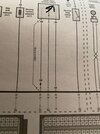Dieselpeter
New Member
Hi, iv just joined and I’m not going to lie I’m probably well out my depth but willing to learn and will take any advice that’s given..first things is thank for just looking and your time.
Any petrol heads on here may like this little project Iv mine I’m working on so here it goes.
On my project car I have a clutch pedal with a variable potentiometer 0-5v I want to fit a 2 step launch control, the way to get the launch control to trigger is to either give it 12v or ground it don’t matter which it has 2 separate arming wires and you can use either.
I’d like to make a adjustable relay that will trigger either 12v or ground using the 1-5v signal from clutch pedal, I’d like to be able to adjust it so say the clutch wears I can adjust the voltage and pedal position to take that into account.
I’m a diesel crane mechanic so have a little bit of knowledge but only enough to be dangerous.
I hope this makes sense.
Thanks Pete
View attachment 138530


Any petrol heads on here may like this little project Iv mine I’m working on so here it goes.
On my project car I have a clutch pedal with a variable potentiometer 0-5v I want to fit a 2 step launch control, the way to get the launch control to trigger is to either give it 12v or ground it don’t matter which it has 2 separate arming wires and you can use either.
I’d like to make a adjustable relay that will trigger either 12v or ground using the 1-5v signal from clutch pedal, I’d like to be able to adjust it so say the clutch wears I can adjust the voltage and pedal position to take that into account.
I’m a diesel crane mechanic so have a little bit of knowledge but only enough to be dangerous.
I hope this makes sense.
Thanks Pete
View attachment 138530

